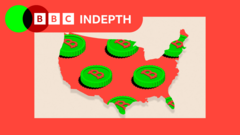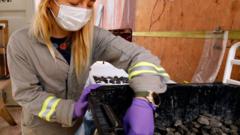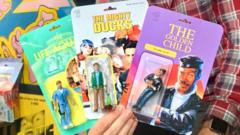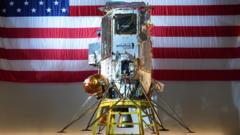The emergence of generative AI-driven personal dolls, where users create miniature versions of themselves, reflects a light-hearted trend but comes with underlying environmental and ethical concerns.
**The AI Doll Trend: Fun or Environmental Concern?**

**The AI Doll Trend: Fun or Environmental Concern?**
As generative AI tools gain popularity, the rise of AI-generated dolls raises critical questions about energy consumption and data ethics.
The proliferation of generative AI technologies like ChatGPT and Copilot has led to a growing online phenomenon where individuals transform themselves into personalized dolls or action figures. This trend has caught momentum on social media, sparking curiosity and widespread participation. However, critics emphasize the potentially detrimental effects of this trend on the environment and privacy.
Users partake in the process by uploading images alongside textual prompts detailing their preferences, from appearance to packaging styles reminiscent of popular toy brands. Despite the allure of self-representation, some experiences have been marred by inaccuracies, with AI often producing unexpected and inaccurate results.
A number of influencers and companies, including beauty brands, have embraced this novel concept, positioning their versions as delightful novelties. However, the question of sustainability casts a shadow over this burgeoning trend. Professor Gina Neff from Queen Mary University London expressed concerns over the significant energy consumption of platforms like ChatGPT, noting that data centers face immense electricity demands.
Critics like Lance Ulanoff, editor at TechRadar, point to the environmental costs of creating AI-generated content, suggesting that the fun associated with AI doll creation might be overshadowed by ecological consequences. Concerns also extend beyond energy use to cover issues of intellectual property, as data utilized for generating these images may often involve copyrighted materials without appropriate compensation.
As social media analyst Jasmine Enberg notes, the easy access to generative AI might accelerate the proliferation of such trends, inviting further scrutiny. The ongoing dialogue stresses the importance of balancing creativity with responsibility, with many advocating for stricter guidelines governing AI development and usage.
In practical experimentation, even reporters grappled with generating their own doll figures, uncovering the challenges of achieving desired accuracy and aesthetics. Frustrations were mentioned regarding the AI's inability to recreate specific features or adhere to user's requests.
In summary, while the allure of the AI doll trend is clear, the environmental and ethical implications demand a more thoughtful approach to its continued popularity. Ultimately, participants in this whimsical creation process must weigh the fun against the broader impacts on our planet and societal norms.
Users partake in the process by uploading images alongside textual prompts detailing their preferences, from appearance to packaging styles reminiscent of popular toy brands. Despite the allure of self-representation, some experiences have been marred by inaccuracies, with AI often producing unexpected and inaccurate results.
A number of influencers and companies, including beauty brands, have embraced this novel concept, positioning their versions as delightful novelties. However, the question of sustainability casts a shadow over this burgeoning trend. Professor Gina Neff from Queen Mary University London expressed concerns over the significant energy consumption of platforms like ChatGPT, noting that data centers face immense electricity demands.
Critics like Lance Ulanoff, editor at TechRadar, point to the environmental costs of creating AI-generated content, suggesting that the fun associated with AI doll creation might be overshadowed by ecological consequences. Concerns also extend beyond energy use to cover issues of intellectual property, as data utilized for generating these images may often involve copyrighted materials without appropriate compensation.
As social media analyst Jasmine Enberg notes, the easy access to generative AI might accelerate the proliferation of such trends, inviting further scrutiny. The ongoing dialogue stresses the importance of balancing creativity with responsibility, with many advocating for stricter guidelines governing AI development and usage.
In practical experimentation, even reporters grappled with generating their own doll figures, uncovering the challenges of achieving desired accuracy and aesthetics. Frustrations were mentioned regarding the AI's inability to recreate specific features or adhere to user's requests.
In summary, while the allure of the AI doll trend is clear, the environmental and ethical implications demand a more thoughtful approach to its continued popularity. Ultimately, participants in this whimsical creation process must weigh the fun against the broader impacts on our planet and societal norms.




















